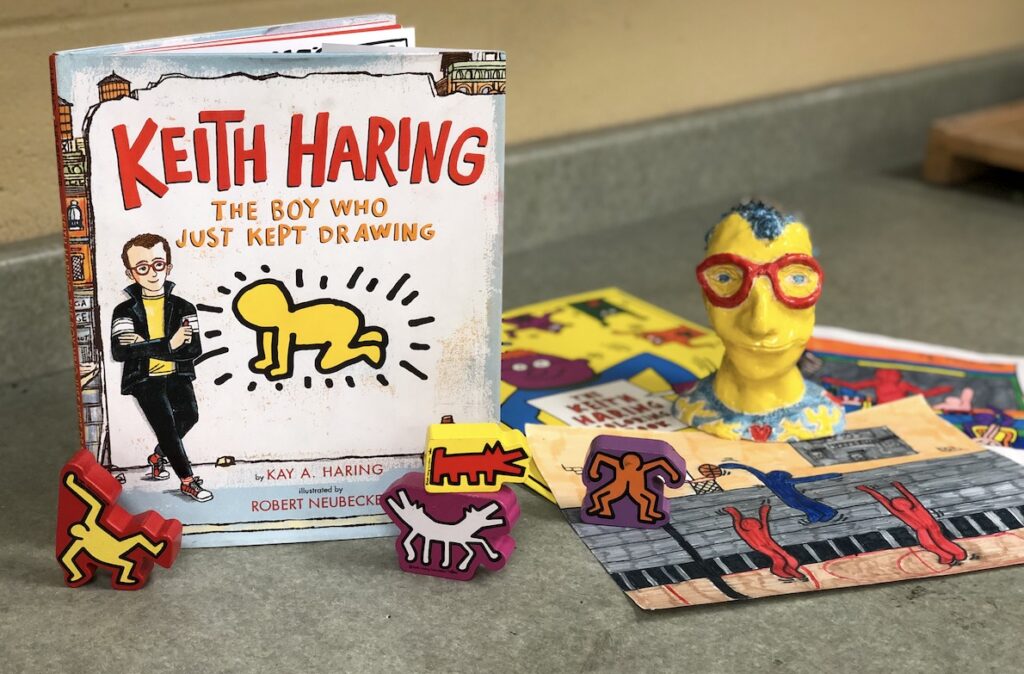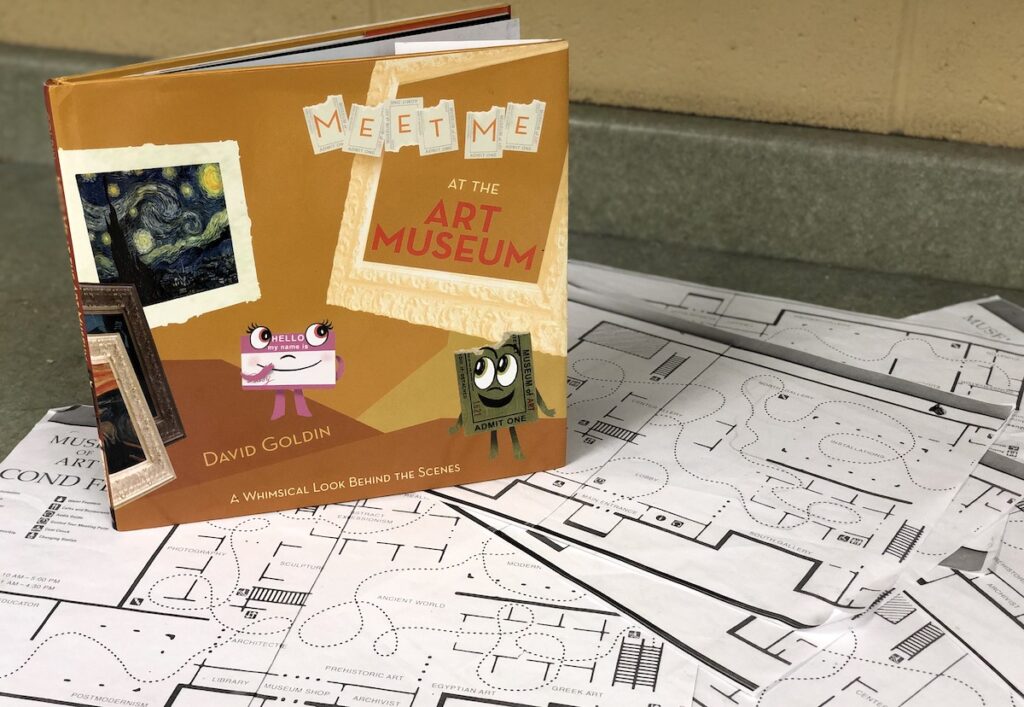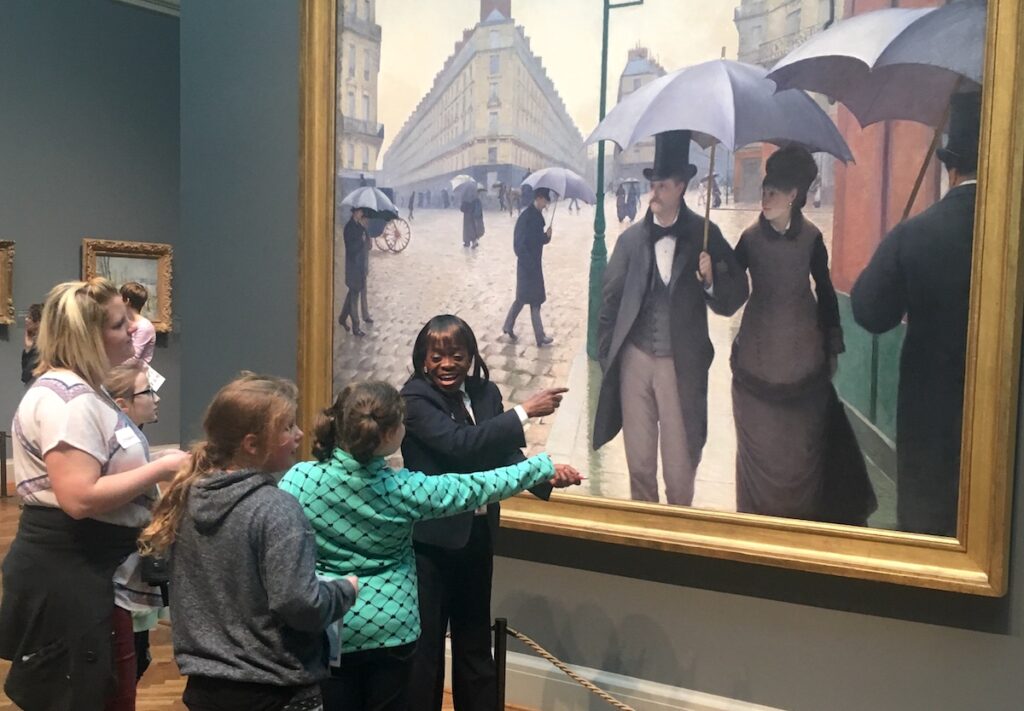Children’s books are a great resource for the elementary classroom, but many can be inspiring for students of any age. As you start to think of the new school year, consider adding a few new books to inspire students.
From beautiful illustrations with an important message to artist biographies, these 5 books would make the perfect addition to your classroom library.

1. My Colors, My World/Mis Colores, Mi Mundo by Maya Gonzalez
Maya Gonzalez is an artist and children’s book illustrator who includes four prevalent themes in her work: issues of gender, sexuality, race, and environment. As an artist, Gonzalez strives to promote social and environmental justice. In her illustrations, she depicts female characters as empowered, rather than weak or evil. Her male characters defy traditional standards of masculinity. The male heroes are often overweight, yet happy and appealing individuals. She has fought to include all body types in her illustrations as she feels such representation is important for children to see.
As Mira Reisberg explains in her article Maya Gonzales: Portrait of the Artist as a Radical Children’s Book Illustration (2008), Gonzalez’s experience as a biracial child greatly influenced her current passions. Reisberg goes on say Gonzalez recalls feeling invisible while searching for representation in the books she read. As a contemporary illustrator, she includes many biracial characters in the books she illustrates, and many of her books are also printed in both English and Spanish.
Consider gently introducing artists like Gonzalez to encourage students to advocate for causes about which they feel strongly. By presenting a wider variety of perspectives, students may gain a better understanding of diverse cultures than they would from traditional Western literature. Encourage your students to seek books that represent and celebrate the great diversity in our world.
Gonzalez utilizes her own life experience to create artworks and illustrations. You may ask your students how they have experienced or observed inequalities in their own lives. Then provide opportunities that would allow your students to create meaningful artworks in response to those experiences.
2. An Artist Once Said: An Inspiration Book by Hannah Rollings
Hannah Rollings illustrated a great book of quotes from over fifty famous artists. Many of these artists are probably in your current curriculum. You can share pages with students throughout the school year. Students can have fun discovering quotes from names they recognize. Even if they don’t know the artists, their thought-provoking quotes about art can inspire artists of any age!
After sharing some of the quotes with your students, and allowing them to see the beautiful illustrations Rollings created for each of them, you could present a similar design challenge. Ask them to research a quote from their favorite artist. Once they have the inspirational words they want to share, ask them to think about how they could best illustrate these words.
Use examples from the book to show how illustration and text can support one another. They go together. Something about the illustration must relate to the quote on the page. Ask students to similarly illustrate a work of art to support their selected quote.
This could also be a great opportunity to introduce artist statements to students. Ask them to come up with their own quote about art, creativity, self-expression, etc. Again, ask students to think about how they can best visually communicate their own artist statement with an illustration.
Display your students’ illustrated quotes around the building to inspire the whole school!
3. Meet Me at the Art Museum: A Whimsical Look Behind the Scenes by David Goldin

If you have a museum field trip planned at any point of the school year, this may be the perfect book to read to students before you go. David Goldin’s book takes students on a journey through an art museum from the perspective of a discarded ticket named Stub. He meets other characters throughout the story that give him a behind-the-scenes look at the museum!
While you’re reading the story aloud to students, you can point out rooms, people, and symbols they might see on your field trip. For example, Stub learns that Badge, the security guard, is there to make sure the valuable artworks aren’t harmed. Stub passes by the curator’s office and learns that the curator helps select and arrange the artwork, sometimes by artist or time period.
These are all great connections you can make from the story to what it’s like going to a real art museum. Some of your students may not have had this experience before, and a children’s book like this is a great introduction.
The inside cover shows a blueprint view of the art museum Stub is exploring. You may use this as inspiration for a fun design and curating activity for your students. Ask them to create a blueprint or floor plan of their dream museum. Once the rooms have been sketched out and colored, ask students to select and arrange, or curate, artwork images for their museum. You can print out thumbnails of artworks students have previously learned about, or will see on your field trip. This can be a fun way to introduce an art career, how artwork is presented, and why museums are so important.
This unique story is sure to add to your students’ excitement about visiting an art museum, and provide them with some helpful tips before they go!

4. A Year Full of Stories: 52 Folktales and Legends from Around the World by Angela McAllister
This book, by McAllister, will take your students around the world throughout the year with stories that align with different seasonal celebrations. For example, for April Fools’ Day students can read the Mayan story of “Rabbit and Crab.” For Human Rights Day, you can share the Italian story, “The Bell of Atri.”
These folktales and legends may align with countries or cultures you currently teach in your curriculum. The book can help add a short reading piece to enhance your art lesson with a traditional story from the area.
You may choose to read the story aloud and ask students to illustrate what they imagine while listening. You can explain the term, “imagery,” as descriptive words that help you picture an image in your mind. Students can apply the imagery from the story to create their own illustrations. Once they’ve completed their original drawings, you can show them how the illustrator, Christopher Corr, applied imagery to create illustrations for the book. Your students may get a kick out of the similarities and differences between their illustrations and Corr’s, and from their peers as well.
5. Keith Haring: The Boy Who Just Kept Drawing by Kay Haring

Many art teachers love to teach Keith Haring and his iconic style of pop art. Students of all ages gravitate to his bold lines and bright colors. There are so many different skills and concepts you can teach inspired by this incredible artist. Who better to write a children’s book about the artist than his sister, Kay Haring? This book is a beautiful representation of Keith Haring’s passion for art, starting from childhood. It is sure to inspire your students and quickly become a favorite of your classroom library.
The book can serve as a great introduction to your Keith Haring unit and provide a great biography written for young readers. From there, you can take your lesson or unit in a variety of directions. Have students create gesture drawings from observation, inspired by Haring’s figure outlines. Encourage students to use symbols to communicate meaning as the artist often did. Create a game of timed chalk artwork inspired by Haring’s subway drawings. Ask students to create posters addressing the social issue of their choice, inspired by the artist’s activism and social commentary.
The book shares some of the prolific work Haring created in his lifetime, including grand sculptures and murals. Have students create papier-mache sculptures of figures using cardboard. Use some of his murals from around the world as inspiration for an original mural around your school! Haring’s passion and drive for creating art can be an engaging art lesson for your students. This book can be an excellent introduction to an artist we all know and love.
To dive into more children’s books about famous artists, check out 70 Children’s Books About Famous Artists.
Final Thoughts
Children’s books can be a fun and engaging way to enhance your curriculum. As students begin to create their own artwork, choose a story of adventure, a tale of overcoming adversity, or words of inspiration to help boost their creativity. Much of visual art is also storytelling. Allow your students to express themselves and tell their own stories. You can use children’s books as examples of how to get started!
What children’s books are popular with your students?
What children’s books have inspired art projects in your curriculum?
Want to incorporate more literacy in your classroom? Check out PRO pack Literacy Strategies In The Elementary Art Room.
Magazine articles and podcasts are opinions of professional education contributors and do not necessarily represent the position of the Art of Education University (AOEU) or its academic offerings. Contributors use terms in the way they are most often talked about in the scope of their educational experiences.





